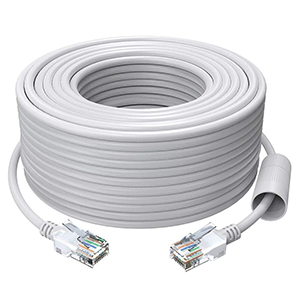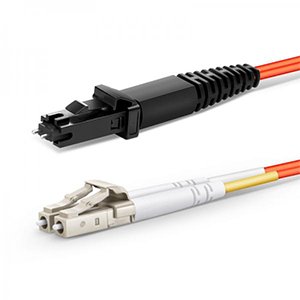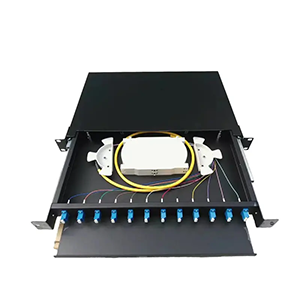VLAN is undoubtedly widely used in modern networks. This article will explore the relationship between VLAN and Layer 3 switches. We will first define the basic concept of VLAN and its implementation mechanism, and explain how VLAN improves network flexibility and security. Next, we will explain how Layer 2 switches support and manage VLANs and analyze their limitations in VLAN environments.
We will explain the advantages of Layer 3 switches in supporting VLANs and explain how they implement routing and forwarding between VLANs. In addition, we will discuss the necessity of using Layer 3 switches in networks of different sizes and complexities and analyze their key role in VLAN deployment. Finally, we will list typical VLAN topologies suitable for deploying Layer 3 switches and explain how they improve the efficiency of inter-VLAN communication.
Overview of VLAN Working Principle
Let me give you an overview of how VLAN (Virtual Local Area Network) works.
Basic concepts and implementation mechanisms of VLAN:
(1) Definition:
- VLAN is a logically divided LAN technology.
- Through software configuration, a physical network can be divided into multiple logical subnets.
(2) Implementation principle:
- VLAN implements grouping by adding VLAN tags to data frames.
- The switch forwards the data frame to the corresponding VLAN subnet according to the VLAN tag.
- Communication between VLANs needs to be forwarded through a router or a three-layer switch.
(3) VLAN classification:
- Port-based VLAN: Grouping based on switch ports
- MAC address-based VLAN: Grouping based on the MAC address of the terminal device
- Protocol-based VLAN: Grouping based on the protocol type of the data frame
VLAN achieves broadcast domain isolation at the data link layer by logically dividing the physical network.
How VLAN improves network flexibility and security:
(1) Improving network flexibility:
- VLAN can flexibly adjust the network topology according to organizational needs.
- No need to physically adjust the wiring, just perform software configuration on the switch.
- This greatly enhances the flexibility and adaptability of the network.
(2) Enhance network security:
- VLAN logically isolates broadcast domains, which can limit the scope of broadcast storms.
- Communication between different VLANs needs to go through routers or layer 3 switches, which improves security.
- VLAN can also serve as the basis for network security policies to achieve more fine-grained access control.
(3) Optimize network management:
- VLAN divides the physical network into logical subnets, which facilitates network management and fault isolation.
- Network administrators can formulate independent policies and configurations for different VLANs.
- This can better meet the network needs of different departments or businesses.
In short, VLAN technology has significant advantages in improving network flexibility, security and management efficiency, and is an important part of modern network design.
Layer 2 Switch and VLAN
Let me explain to you in detail how the Layer 2 switch supports and manages VLAN, and its limitations in the VLAN environment.
How the Layer 2 switch supports and manages VLAN:
(1) VLAN port configuration
- Each port of the Layer 2 switch can be configured as a member of a different VLAN.
- According to the setting of the port attributes, the data frame will be forwarded to the corresponding VLAN subnet.
(2) VLAN tag processing
- The switch will add a VLAN tag (IEEE 802.1Q standard) to the data frame to identify the VLAN.
- At the same time, the switch can also parse and identify the VLAN tag information on the data frame.
(3) Inter-VLAN communication
- Communication between different VLANs needs to be forwarded through a router or a Layer 3 switch.
- The Layer 2 switch itself cannot directly route data traffic between different VLANs.
(4) VLAN management
- The switch provides VLAN management functions, and the network manager can manually configure VLAN attributes and policies.
- Some high-end switches also support dynamic VLAN registration protocols such as GVRP.
In summary, the Layer 2 switch is the main implementation device of VLAN technology, responsible for the exchange and forwarding of data frames within the VLAN subnet.
Limitations of Layer 2 switches in VLAN environments:
(1) Limited inter-subnet routing
- Layer 2 switches cannot directly route traffic between different VLANs and need to rely on routers.
- This will increase the deployment complexity of network devices and the delay of data forwarding.
(2) Lack of Layer 3 functions
- Layer 2 switches cannot provide Layer 3 network functions such as IP subnet division and DHCP.
- When more complex network services are required, Layer 2 switches appear to have limited capabilities.
(3) Weak security
- The VLAN isolation of Layer 2 switches is limited to the data link layer, and the security is relatively weak.
- Attackers may use methods such as ARP spoofing to infiltrate other VLANs.
(4) High management complexity
- In a large-scale VLAN environment, the configuration and management of Layer 2 switches will become complicated.
- Network managers need to manually create VLANs and assign ports for each switch.
In short, although Layer 2 switches can support VLAN technology, they still have certain limitations in terms of functionality, security, and large-scale management. Therefore, in modern networks, Layer 3 switches or routers usually play a more important role.
Layer 3 switches and VLANs
Then I will introduce to you in detail the advantages of Layer 3 switches in VLAN environments and how to achieve inter-VLAN routing and forwarding.
Advantages of Layer 3 switches in supporting VLANs:
(1) Native support for Layer 3 functions
- Layer 3 switches have Layer 3 network functions such as IP subnet division and DHCP services.
- This makes up for the shortcomings of Layer 2 switches in Layer 3 network services.
(2) Efficient inter-VLAN routing
- Layer 3 switches can directly route data traffic between different VLANs.
- No need to rely on additional router devices, reducing the complexity of network device deployment.
(3) Enhanced security
- The VLAN isolation of Layer 3 switches is not only at the data link layer, but also at the network layer.
- It can better block cross-VLAN attacks and improve network security.
(4) Simpler management
- Layer 3 switches provide more powerful VLAN management functions.
- Supports automatic configuration, VLAN templates, etc., greatly reducing management complexity.
How does a Layer 3 switch implement inter-VLAN routing and forwarding:
(1) Sub-interface configuration
- The physical port of a Layer 3 switch can be divided into multiple logical sub-interfaces.
- Each sub-interface corresponds to a VLAN, with an independent IP address and gateway configuration.
(2) Routing table establishment
- The Layer 3 switch will establish an independent routing table entry for each VLAN sub-interface.
- According to the destination IP address, the appropriate VLAN is automatically selected for data forwarding.
(3) Layer 3 switching and forwarding
- When data packets need to be forwarded across VLANs, the Layer 3 switch will first perform Layer 3 routing.
- Route data packets from the source VLAN to the target VLAN to achieve efficient interconnection between subnets.
(4) Policy control
- Layer 3 switches can also flexibly control the routing policies between VLANs.
- Communication between VLANs can be restricted and prioritized based on policies such as ACL and QoS.
In general, Layer 3 switches can achieve efficient routing and forwarding between VLANs through sub-interface configuration and routing table management, providing more powerful interconnection functions for the network.
Does VLAN need a Layer 3 switch?
Let me discuss in detail whether VLAN needs a Layer 3 switch and the key role of a Layer 3 switch in VLAN deployment.
The necessity of using a Layer 3 switch under different network scales and complexities:
(1) Small network
- In a small network environment, a Layer 2 switch can meet basic VLAN requirements.
- Because the number of VLANs is limited, the functions and management complexity of Layer 2 switches are sufficient.
(2) Medium-sized networks
- As the network size and the number of VLANs increase, the limitations of Layer 2 switches will gradually become apparent.
- In this case, the routing function and security of Layer 3 switches become very important.
(3) Large networks
- In large or enterprise-level networks, Layer 3 switches are almost necessary.
- It can provide complex VLAN management, security isolation, and efficient routing.
- It is difficult for Layer 2 switches to meet the needs of such complex network environments.
Network size and complexity are key factors in determining whether a Layer 3 switch is needed. Small networks can use Layer 2 switches, but medium and large networks must rely on Layer 3 switches.
The key role of Layer 3 switches in VLAN deployment:
(1) Inter-VLAN routing and forwarding
- The Layer 3 switch can directly route data traffic between different VLANs.
- Avoids the reliance on additional router devices and improves network performance and reliability.
(2) Network security protection
- The VLAN isolation of the Layer 3 switch involves the network layer, which can better block cross-VLAN attacks.
- Access rights between VLANs can be flexibly controlled according to security policies.
(3) Simplified network management
- The Layer 3 switch provides more powerful VLAN management functions and automated configuration capabilities.
- The complexity of network management is greatly reduced.
(4) Layer 3 network services
- Layer 3 switches have Layer 3 network service capabilities such as IP subnet division and DHCP allocation.
- Meet the needs of modern networks for richer Layer 3 functions.
In summary, in medium and large network environments, Layer 3 switches have become the key infrastructure for VLAN deployment. It can provide more powerful routing forwarding, security isolation and network management functions to meet the needs of complex network environments.
Application of Layer 3 switches in VLAN scenarios
Let me summarize the typical application scenarios of Layer 3 switches in VLAN scenarios and how to improve the efficiency of inter-VLAN communication.
Typical VLAN topologies suitable for deploying Layer 3 switches:
(1) Layered network architecture
- Common Layer 3 network topologies include core layer, distribution layer and access layer.
- Layer 3 switches are usually deployed in the core layer or distribution layer to manage and route each VLAN subnet.
(2) Leaf-Spine topology
- This flat two-layer network topology is widely used in data centers.
- Layer 3 switches, as spine layer devices, provide efficient routing functions between VLANs.
(3) Virtualized environment
- In virtualIn virtualized data centers, Layer 3 switches can provide interconnection for virtual machines in different VLANs.
- Use the VLAN isolation and routing functions of Layer 3 switching to enhance the security of the virtualized environment.
(4) Branch network
- In enterprise branches, Layer 3 switches can manage local VLANs and interconnect with the headquarters network.
- Layer 3 switching can provide routing forwarding between VLANs to ensure the connectivity of branch networks.
How does a Layer 3 switch improve the efficiency of inter-VLAN communication:
(1) Efficient routing forwarding
- The Layer 3 switch can directly route data traffic between different VLANs.
- Avoids reliance on additional router devices and greatly improves forwarding efficiency.
(2) Load balancing
- The Layer 3 switch can load balance multiple VLAN paths according to traffic conditions.
- The overall throughput of inter-VLAN communication is improved.
(3) QoS guarantee
- The Layer 3 switch has rich QoS policy functions and can assign priorities to inter-VLAN traffic as needed.
- Ensure the transmission quality of key business traffic.
(4) Security isolation
- The Layer 3 switch has stronger VLAN isolation capabilities and effectively blocks cross-VLAN attacks.
- The security of inter-VLAN communication is improved and network risks are reduced.
In summary, the three-layer switch can greatly improve the performance and reliability of inter-VLAN communication through efficient routing forwarding, load balancing, QoS control and security isolation, and is an indispensable key device in VLAN deployment.
Summary
Reasonable deployment of three-layer switches can effectively support the application of VLAN in modern networks. Our company has long focused on the research and development and production of network equipment and its supporting products, and has rich industry experience. Our three-layer switch products have reached the industry-leading level in terms of performance and functions, and can meet your demanding needs for VLAN construction.
Whether you need to deploy VLAN in a data center, campus network or enterprise network, we can provide you with customized three-layer switch solutions. At the same time, our professional team will provide you with a full range of technical support, including on-site surveys, solution design, and equipment configuration and maintenance. Contact us now to learn more about the details of three-layer switches in VLAN applications.
Layer 3 Switch FAQ
VLANs are a Layer 2 (data link layer) construct, while Layer 3 switching involves routing between different IP subnets or VLAN segments.
Yes, VLANs can be implemented using a Layer 2 switch without the need for a dedicated Layer 3 switch, as long as the network design does not require routing between VLAN segments.
A Layer 3 switch is typically required when you need to route traffic between different VLAN segments or IP subnets, such as in cases where devices in one VLAN need to communicate with devices in another VLAN.
Key advantages include the ability to route traffic between VLANs, implement inter-VLAN policies, and provide additional Layer 3 features like access control lists (ACLs) and dynamic routing protocols.
While some Layer 2 switches may have limited routing capabilities, they are generally not as capable or feature-rich as a dedicated Layer 3 switch for handling inter-VLAN routing and advanced Layer 3 functions.
Alternatives include using a router or a multilayer switch, which provides both Layer 2 switching and Layer 3 routing functionality.
The configuration and management of VLANs on a Layer 2 switch are generally simpler, as it primarily involves VLAN creation and port assignment. Layer 3 switches require additional configuration for routing between VLANs.
In scenarios where a large amount of inter-VLAN traffic is expected, a Layer 2 switch may experience higher CPU utilization and potentially lower overall performance compared to a dedicated Layer 3 switch.
Layer 3 switches typically provide more advanced security features, such as the ability to implement access control lists (ACLs) and firewall functionality, which can enhance the overall security of the VLAN-based network.
Key factors include the network topology, the need for inter-VLAN routing, performance requirements, security needs, and the overall cost and complexity of the network infrastructure.




